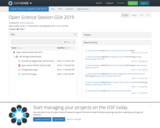
Open Science Session GSA 2019
- Subject:
- Applied Science
- Health, Medicine and Nursing
- Social Science
- Material Type:
- Lecture Notes
- Author:
- Derek Isaacowitz
- Date Added:
- 08/03/2021

Open Science Session GSA 2019

يهدف الموقع إلى التعرف على العلاج الكيمائي وانواعه وفوائده واضراره
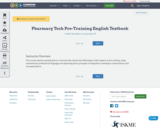
This course teaches participants to communicate clearly and effectively in both speech and in writing, using conventional professional language and observing basic principles of etiquette in workplace conversations and correspondence.
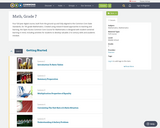
Four full-year digital course, built from the ground up and fully-aligned to the Common Core State Standards, for 7th grade Mathematics. Created using research-based approaches to teaching and learning, the Open Access Common Core Course for Mathematics is designed with student-centered learning in mind, including activities for students to develop valuable 21st century skills and academic mindset.
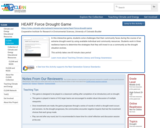
In this interactive game, students solve challenges that their community faces during the course of an extreme drought event by using available individual and community resources. Students work in three resilience teams to determine the strategies that they will invest in as a community as the drought situation evolves.
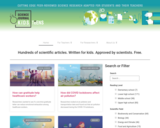
Hundreds of scientific articles. Written for middle and high school students. Approved by scientists. Free.
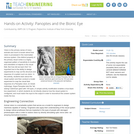
Vision is the primary sense of many animals and much is known about how vision is processed in the mammalian nervous system. One distinct property of the primary visual cortex is a highly organized pattern of sensitivity to location and orientation of objects in the visual field. But how did we learn this? An important tool is the ability to design experiments to map out the structure and response of a system such as vision. In this activity, students learn about the visual system and then conduct a model experiment to map the visual field response of a Panoptes robot. (In Greek mythology, Argus Panoptes was the "all-seeing" watchman giant with 100 eyes.) A simple activity modification enables a true black box experiment, in which students do not directly observe how the visual system is configured, and must match the input to the output in order to reconstruct the unseen system inside the box.

Students demonstrate the erythrocyte sedimentation rate test (ESR test) using a blood model composed of tomato juice, petroleum jelly and olive oil. They simulate different disease conditions, including rheumatoid arthritis, anemia, leukocytosis and sickle-cell anemia, by making appropriate variations in the particle as well as in the fluid matrix. Students measure the ESR for each sample blood model, correlate the ESR values with disease conditions and confirm that diseases alter blood composition and properties. During the activity, students learn that when non-coagulated blood is let to stand in a tube, the red blood cells separate and fall to the bottom of the tube, resulting in a sediment and a clear liquid called serum. The height in millimeters of the clear liquid on top of the sediment in a time period of one hour is taken as the sedimentation rate. If a disease is present, this ESR value deviates from the normal, disease-free value. Different diseases cause different ESR values because blood composition and properties, such as density and viscosity, are altered differently by different diseases. Thus, the ESR test serves as a real-world diagnostic screening test to identify indications of the presence of any diseases in people.
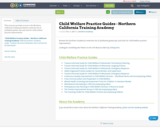
This resource provides access to the Northern California Training Academy's extensive list of published guides, tips and tools for child welfare practice improvement.

This talk explores the intersection of generative AI and Open Educational Resources (OER), examining both the exciting opportunities and the inherent challenges. Generative AI offers the potential to revolutionize OER creation, adaptation, and delivery. It can assist with drafting, translation, improved accessibility, and can facilitate personalized learning experiences. However, critical issues such as access disparities, content quality concerns, amplified biases, copyright complexities, and data privacy must also be addressed. The talk calls for responsible and transparent use of AI, encouraging educators to experiment, stay informed, and prioritize an ethical approach in deploying AI tools to enhance open education.
(note: the above description was generated by pasting the video's automatically-generated captions into Google's chatbot Gemini using the Advanced model on 4/26/2024)
Presented by D’Arcy Hutchings, Instructional Design and Open Education Librarian, University of Alaska Anchorage

Short Description:
This book includes tutorials created for 2nd- 3rd year Pharm. D. students. It includes a review of thorough PubMed MeSH and keyword search techniques and an introduction to EMBASE searching with EMTREE.
Word Count: 7471
(Note: This resource's metadata has been created automatically by reformatting and/or combining the information that the author initially provided as part of a bulk import process.)
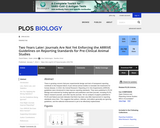
A study by David Baker and colleagues reveals poor quality of reporting in pre-clinical animal research and a failure of journals to implement the ARRIVE guidelines. There is growing concern that poor experimental design and lack of transparent reporting contribute to the frequent failure of pre-clinical animal studies to translate into treatments for human disease. In 2010, the Animal Research: Reporting of In Vivo Experiments (ARRIVE) guidelines were introduced to help improve reporting standards. They were published in PLOS Biology and endorsed by funding agencies and publishers and their journals, including PLOS, Nature research journals, and other top-tier journals. Yet our analysis of papers published in PLOS and Nature journals indicates that there has been very little improvement in reporting standards since then. This suggests that authors, referees, and editors generally are ignoring guidelines, and the editorial endorsement is yet to be effectively implemented.
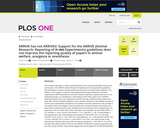
Poor research reporting is a major contributing factor to low study reproducibility, financial and animal waste. The ARRIVE (Animal Research: Reporting of In Vivo Experiments) guidelines were developed to improve reporting quality and many journals support these guidelines. The influence of this support is unknown. We hypothesized that papers published in journals supporting the ARRIVE guidelines would show improved reporting compared with those in non-supporting journals. In a retrospective, observational cohort study, papers from 5 ARRIVE supporting (SUPP) and 2 non-supporting (nonSUPP) journals, published before (2009) and 5 years after (2015) the ARRIVE guidelines, were selected. Adherence to the ARRIVE checklist of 20 items was independently evaluated by two reviewers and items assessed as fully, partially or not reported. Mean percentages of items reported were compared between journal types and years with an unequal variance t-test. Individual items and sub-items were compared with a chi-square test. From an initial cohort of 956, 236 papers were included: 120 from 2009 (SUPP; n = 52, nonSUPP; n = 68), 116 from 2015 (SUPP; n = 61, nonSUPP; n = 55). The percentage of fully reported items was similar between journal types in 2009 (SUPP: 55.3 ± 11.5% [SD]; nonSUPP: 51.8 ± 9.0%; p = 0.07, 95% CI of mean difference -0.3–7.3%) and 2015 (SUPP: 60.5 ± 11.2%; nonSUPP; 60.2 ± 10.0%; p = 0.89, 95%CI -3.6–4.2%). The small increase in fully reported items between years was similar for both journal types (p = 0.09, 95% CI -0.5–4.3%). No paper fully reported 100% of items on the ARRIVE checklist and measures associated with bias were poorly reported. These results suggest that journal support for the ARRIVE guidelines has not resulted in a meaningful improvement in reporting quality, contributing to ongoing waste in animal research.
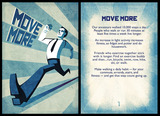
In this lesson, students use a Micro:bit to create a movement reminder device. This device will signal anyone wearing it to get up and move if they have been in one place for too long.
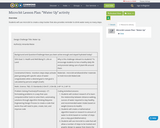
Students will use micro:bit to create a step tracker that also provides reminder to drink water every so many steps.
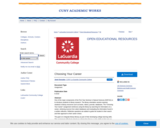
One of the major components of the First Year Seminar in Natural Sciences (NSF101) is to introduce students to library research. The library orientation session exposes students to library resources such as books, videos, journals, databases. The "Choosing Your Career" assignment reinforces using the library by searching for information on a career, retrieving sources from select databases and evaluating the information found in a written reflection. Reflection questions are added to guide the student in their search and their approach to their career choice.
The goal is to integrate library literacy as part of their developing college learning skills. This assignment effectively introduces information literacy as the ability to find and use information and critically think about the information found when deciding on a career path.
This assignment consists of the following;
90-minute library orientation session (one lecture session)
followed up by library research (students' time)
initial draft (hard copy for instructor comments)
written revision (students' time)
a final written 1500-word research reflection. (deposited on student ePortfolio)
Objectives
1. Identify one science profession that interests you
2. Research the profession using library resources
3. Write a 1500-word reflection including the questions posed

Short Description:
Bringing together aspects of ethics, social and civil responsibility, advocacy and publics, this introductory textbook provides a new approach to communication theory and practice in the post truth era. In this book, students will examine fields that intersect with public interest frameworks to provide building blocks and strategies for effective communication. These include organisational listening, capacity building, partnerships and alliances, the role of social enterprises, the concepts of 'wicked problems' and 'discourse arenas', and the importance of participation and activism in generating democratic debate. The book examines social problems and interest conflicts that are faced every day - from environmental degradation to homelessness; public health to media power - and considers the positions of different publics and individuals in navigating the communication of public interest processes and outcomes.
Long Description:
‘What an amazing resource for students. The mixture of accessible and informative text, case studies, interactive activities, and more make this such an engaging read.’ Professor Kelly Fielding, University of Queensland
‘This book is an excellent resource for students, practitioners, and community organisations among others, which provides a comprehensive overview and deeper insights situating public interest communication in society.’ Assistant Professor Michele Clark, Bond University
‘Students will find Johnston and Gulliver’s book an excellent introduction to the theoretical debates around the concept of the ‘public interest’, an idea which is of central importance in ethics, democratic government, the law, and the notion of a ‘free press’.’ Dr Ian Somerville, University of Leicester
‘This is a fabulous introduction to key concepts in public interest communication. It untangles the notion of ‘publics’ and shows how theories of the public interest, the public sphere, and discourse arenas, among others, intersect with communication practice.’ Dr Skye Doherty, University of Queensland
‘This book shines a spotlight on the strategic value and purpose of communication by showing its centrality to finding solutions. While addressing action as well as theory, it goes beyond the usual tactical-level discussion to focus on the context in which communication contributes to society.’ Dr Leanne Glenny, University of South Australia
Word Count: 22869
ISBN: 978-1-74272-359-4
(Note: This resource's metadata has been created automatically by reformatting and/or combining the information that the author initially provided as part of a bulk import process.)
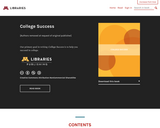
College Success takes a fresh look at what it means, in today’s world, with today’s students, to be successful in college.Although many of the topics included—from study skills to personal health, from test-taking to managing time and money—will look familiar to those who have used student success texts that have been around for many editions, College Success takes a new approach. The focus is on realistic, practical tools for the students who need them. This is a book designed, frankly, for students who may have difficulty with traditional college texts. The style is direct and to the point. Information is presented concisely and as simply as possible. This is not a weighty tome that discusses student success—this is a manual for doing it.College student demographics have changed considerably in recent decades. More than a third of all students enroll not directly from high school but after a delay of some years. More students are working and have families. More students come from varied ethnic and cultural backgrounds. More students are the first in their family to attend college. More students have grown up with electronic media and now read and think in ways different from the previous generation. With these and so many other cultural changes, more students are not well prepared for a college education with the study skills and life skills they need to become successful students.For each student to get the most out of College Success and their college experience they must understand who they are as it relates to college. To that end, in every chapter students explore themselves, because success starts with recognizing your own strengths and weaknesses. Students make their own goals based on this self-assessment, determining what success in college really means for them as individuals. Interactive activities then help students learn the choices available to them and the possibilities for improving their skills. Skills are presented in step-by-step processes, tips for success in manageable highlighted displays. Most important, students always see the value of what they are reading—and how they can begin to apply it immediately in their own lives.College Success is intended for use in Freshmen Orientation, Study Skills or Student Success courses. A 2009 study revealed that currently nationwide, 34% of college freshmen do not return to their college for their sophomore year. This book is designed to help change that.
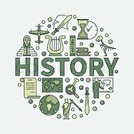
Title: Information Literacy Throughout HistoryGrade: 11th Grade HistoryOverall Goal: This lesson will be for 11th grade U.S. History students. It will teach them how to analyze and understand documents and news sources. The students will play a board of the game will take students through different time periods of U.S. History, starting with the Pilgrim Era and ending with modern day. The student will draw a card and answer a question written on the card pertaining to the era of U.S. History they are in on the board. The questions will all involve the students being given a quote to analyze, or a QR code they can scan that will take them to a historical document that they must briefly examine. If they answer the question on the card correctly, the student will get to roll the die and advance that many spaces. The first student to get through the modern era will win the game. The students will write an essay at the end of the lesson plan. The goal of this lesson plan will be for the students to analyze documents based on the event that relates to the prompt they are given. They will also be assessed on their ability to correctly cite these sources, as well as being able to decipher between good and bad sources of information. StandardsLearning ObjectivesAssessment3b. Students evaluate the accuracy, perspective, credibility and relevance of information, media, data or other resources. USH.9.4 Explain issues and problems of the past by analyzing the interests and viewpoints of those involved.Students will be able to analyze the quality and credibility of websites.Students will be able to critically analyze the intentions of commercial websites.Students will be to apply different search strategies to increase the accuracy and relevance of online search results.Students will be able to analyze the credibility of news sources and articlesPick a historical article to write an essay on and analyze the biases presented in that article. Key Terms & Definitions: Information Literacy: The ability to identify, find, evaluate, and use information effectivelyBias: a belief held by the author of a document that might impact the information they presentViewpoint: a person’s point of viewRelevance: something that is closely connected or important to a topicCite: evidence for the argument or statement that a person is attempting to make.Era: a specific period of timeAmerican Revolution: 1765- 1783. The Thirteen Colonies gain independence from Great Britain.Civil War and Reconstruction: 1861- 1877. The South secedes from the Union and eventually loses the Civil War. Then, the nation rebuilds and restructures without slavery.World War II: 1939- 1945: Hitler creates the Axis Powers and starts the Holocaust. The Allied Powers get involved and eventually end the war with the United States dropping nuclear bombs on Japan.21st Century: the era that is currently taking place. 2000- present. Lesson Introduction (Hook, Grabber):https://www.youtube.com/watch?v=u8QMqNU9ShA This is a clip from a Jimmy Fallon skit about Donald Trump and “fake news”. This will get students engaged with the material because it’s funny and relates the content to things that are going on right now. The lesson will cover different sorts of news and historical documents throughout U.S. History, so getting students to see that this is still relevant and important for them to be able to recognize today is very important. Students will have a prior knowledge of who Donald Trump is and that he is obsessed with fake news, and they will know that fake, sensationalized news is a big problem for people nowadays because there are a lot of unreliable information and websites online. Students will also have a basic knowledge of U.S. History and they will know major eras in history, for example they will know about the Revolutionary War, the Progressive Era, World War II. etc. Lesson Main: The board game is a game where students will “travel through history”. The board is split into four sections which are the Revolutionary War, the Civil War, World War Two, and the 21st century. The students begin in the Revolutionary War era. Each era has 5 spaces they can land on. In each era they will have to answer questions about that era. A question could be something like “When did the Revolutionary War start?”. Questions could also be something where students are given a QR code to scan and it will take them to a political cartoon and they will have to answer the question “Do think this political cartoon was made by the British or the Americans?”. This will be the same throughout all sections of the board. Students will be given either a trivia question about the era or a document/political cartoon/quote from the era that they have to answer. If they answer correctly, the student can roll a dice and move forward that number of spaces. If they get the question wrong then they will stay at the same space. The game ends when a player gets to the finish spot first.This will be beneficial for students because most times, history is “written by the winner”. That means that a lot of groups throughout history have had their viewpoint erased and now we are only told the people in power’s perspective. This board game teaches students to skim a document or read a quote and try to understand what viewpoints and biases are represented in that document. These are our learning objectives so, the board game has students accomplish these learning objectives. Also, with the inclusion of the 21st century section, students will meet the ISTE objectives because they will analyzing documents and the reliability of news articles from our modern era. This not only meets the ISTE standard, but it also shows the students that what was taught in the board game is still important and relevant to them today, even though they mainly examined documents from the past. Lesson Ending: At the end of the lesson, students will reconvene with the teacher and their assessment will be explained. The assessment will be an essay over a historical document of the students choosing. The document can be a piece of writing, political cartoon, or any other historical document written before 1970 that they believe they can write a 3 page essay about. The document should have been made before 1970 because that shows that the students can analyze historical documents and this is for a history class. The paper should be summarizing the document and then analyzing the viewpoint and biases of the document’s creator, then explaining how those biases impacted the way the author wrote the essay and the arguments the author presented. Additionally, since “history is usually written by the winner”, outstanding essays will also explain whose opinion or voice on their topic might be left out, or explain a person or group who might disagree with the author’s point of view. Assigning students an essay to show that they know how to analyze sources is very valuable because essays force them to provide their own opinions about how the topic of the essay is or is not reliable or biased. This makes it very easy to the teacher to ensure that the students fully understand how to analyze documents and how to coherently convey their analysis in writing. The essay assignment will be given in class but it should be written at home. Assessment Rubric: 1234FormatThe essay is not in size 12 Times New Roman Font, not in MLA format, citations are totally incorrect or non-existent, there are many grammatical errors, the essay is not 3 pagesThey essay is not in size 12 Times New Roman font, there are errors in MLA format, citations are mostly incorrect, there are many grammatical errors, the essay is not 3 pages longThe essay is in size 12 Times New Roman font, MLA format, citations are mostly correct, there are few grammatical errors, the essay is 3 pages longThe essay is in size 12 Times New Roman font, written in MLA format, citations are correct, there are no grammatical errors, the essay is 3 pages longSummaryStudents did not summarize their document, cited their source incorrectly, and their document was not written before 1970Students spent a paragraph or less summarizing their document, cited their source incorrectly, OR their document was not written before 1970Students summarized their article briefly, cited their source correctly, and their document was made before 1970Students accurately summarized their historical document, cited their source correctly, and their document was made before 1970AnalysisStudents do not analyze their documents viewpoint and biases or they completely misinterpret the documentStudents attempt to analyze their document’s viewpoint and biases but get some facts wrongStudents correctly analyze their document’s viewpoint and biasesStudents correctly analyze their document’s viewpoint, biases, and explain whose opinion is left out of the document Resources / Artifacts: These should link to things you’ve actually created in support of the lesson. They should also be reference above during the lesson (as shown above). Each team member should create one artifact to support this lessons. Examples could include: (Leah) Screencast: https://youtu.be/7VgNxagmXhI(Konnor) Infographic: https://create.piktochart.com/infographic/saved/28152960#(Konnor) Board game tutorial video: https://www.youtube.com/watch?v=LpRb_awf0-s Differentiation: Scenario 1 Your class is composed of 30 students with a wide range of abilities and interests. Through careful assessment, you learn that your students range from those who read at or above grade level to those who struggle to read anything at all. The same goes for class discussions, you have students who are eagerly participate in classroom discussions, and a group of students who struggle to express their ideas orally. Also, you have 5 students whose native language is not English: they speak Spanish, Chinese, Korean, Arabic, and German at home. Two students do not have internet at home, and they usually have trouble completing their homework on time if it requires using online resources. TaskIn your lesson plan, you are asked to address differentiation possibilities for ability levels, different language needs, and a diverse range of student learners. Based on the given scenario, discuss and write up 4-5 ideas for differentiation, including certain technology tools or resources you can use to help your students learn the content of your DC lesson. Each student is provided with a school-owned iPad so if they don’t know english or have limited english abilities they can use a translation app like Google Translate to translate the question so they can understand it.Additionally, for the ESL or EFL students, the teacher can use Newsela to help them understand documents and articles they might be reading because Newsela will change sources to fit a student’s reading level.The iPads provided will also help the students who don’t have internet at home or don’t have access to smartphones because they will be able to scan QR codes in the board game and have a device that they can type an essay with.For the students who can’t read, the teacher can be available after class or after school to meet with them and go through the readings very in-depth to make sure the student gets the information they need. Additionally, the teacher can incorporate as many pictures and videos in the in-class presentation as possible to ensure that the student can follow along in class as well as they can.For the students who struggle to express themselves orally, the teacher can use Nearpod for presentations so the students can type out their answers instead of having to present them verbally. Anticipated Difficulties: One difficulty we anticipate is students not having access to their phones as this will take place during class so we will have iPads available for students to use to perform the webquests. Another difficulty we anticipate students having is not being able to get a QR code or some other piece of technology to work, so we made an excess of questions for each section of the board so students won’t run out of questions to ask.

Vídeo elaborado com dicas para pais ou responsável sobre como falar com as crianças a respeito do novo coronavírus.